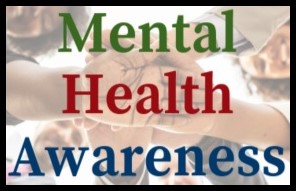
In the third installment of our Mental Health Awareness series, we will take a look at anxiety disorders. Anxiety, opens a new window, as a mental health diagnosis, is complicated because everyone experiences anxiety at one time or another. Anxiety is the body's natural reaction to stress. We all experience stress about what will happen in the future. But anxiety becomes a disorder when it begins to affect your day-to-day life.
To learn more about the difference between everyday anxiety and an anxiety disorder, look at this chart, created by the Anxiety and Depression Association of America, opens a new window, reproduced here:
| Everyday Anxiety | Anxiety Disorder |
|
|
|
|
|
|
|
|
|
|
In general, the term "anxiety disorder" encompasses several disorders, including Generalized Anxiety Disorder, opens a new window (GAD), Obsessive-compulsive Disorder, opens a new window (OCD), Panic Disorder, opens a new window, Phobias, opens a new window, Post-Traumatic Stress Disorder, opens a new window (PTSD), and Social Anxiety Disorder, opens a new window. In later installments of this Mental Health Awareness series, we will discuss Obsessive-Compulsive Disorder, opens a new window and Post-Traumatic Stress Disorder, opens a new window separately.
If you are suffering from an anxiety disorder, you are not alone. According to the National Alliance on Mental Illness, opens a new window, an estimated 40 million adults in the U.S. (18%) have an anxiety disorder.
The Anxiety and Depression Association of America has a helpful list of things to do to manage anxiety here, opens a new window.
If you or someone you know is experiencing an unbearable level of anxiety, there are people who care and want to help. Call 1-800-273-TALK or Text MHA to 741741.
Please note: this discussion of anxiety and anxiety disorders is for informational purposes only, and is not meant to take the place of a visit to and advice from a health-care professional.
We have compiled a list of St. Tammany Parish Library materials and external websites that may be helpful for those of us who are experiencing an anxiety disorder:



Add a comment to: Mental Health Awareness: Anxiety Disorders